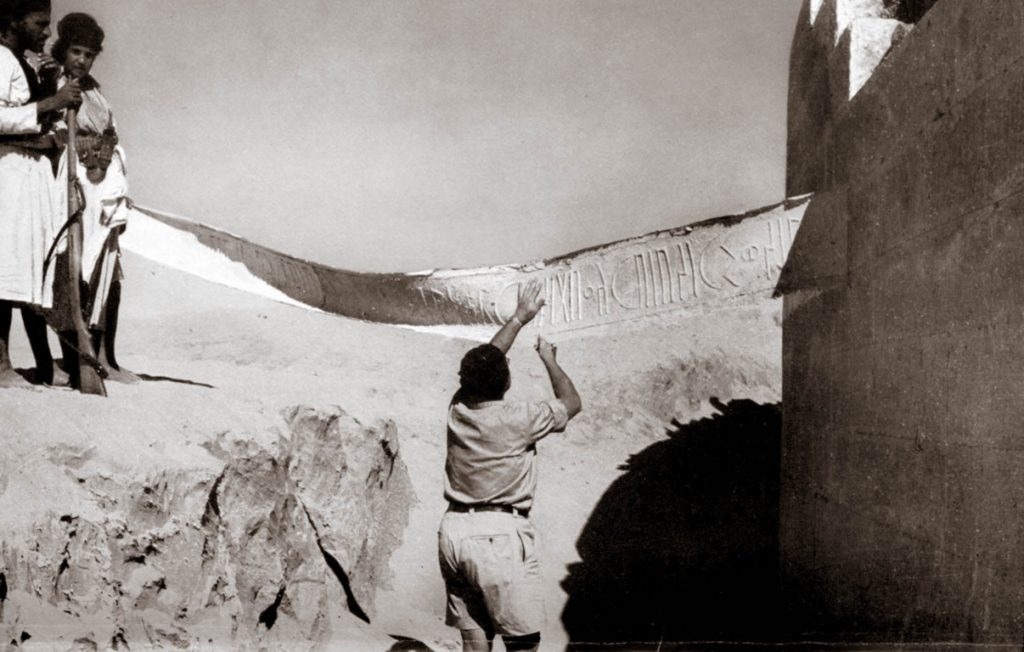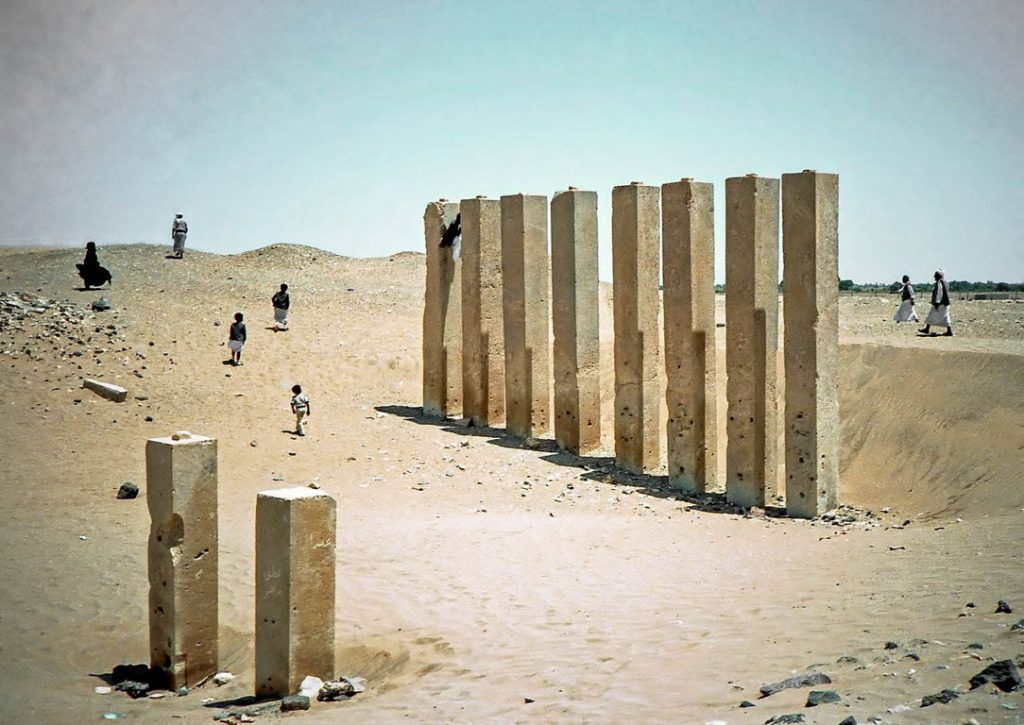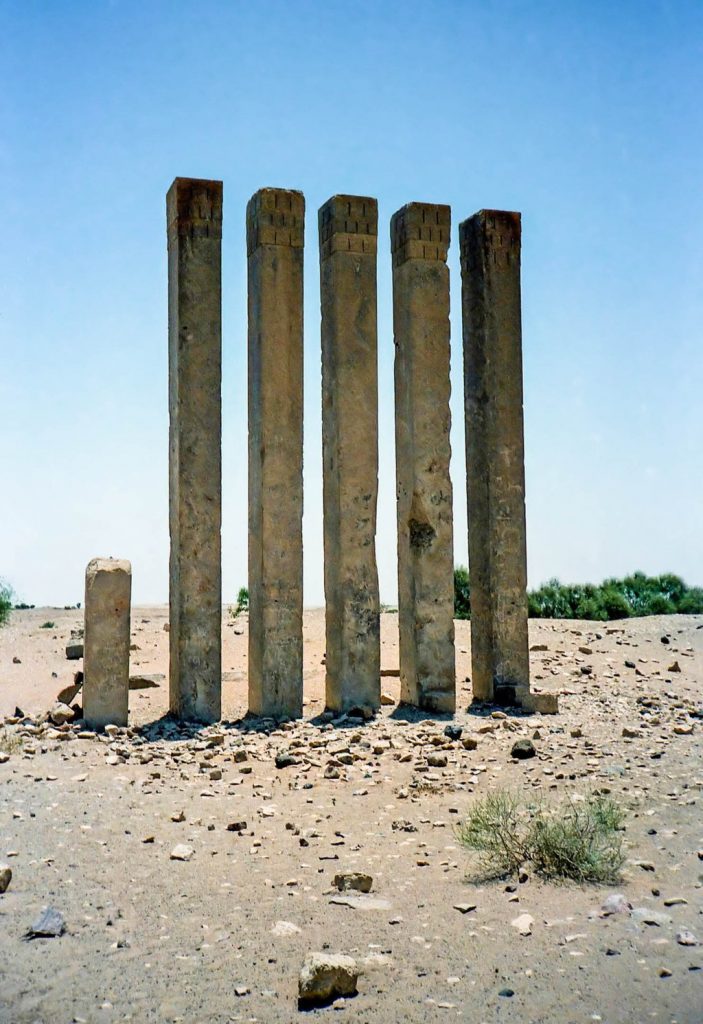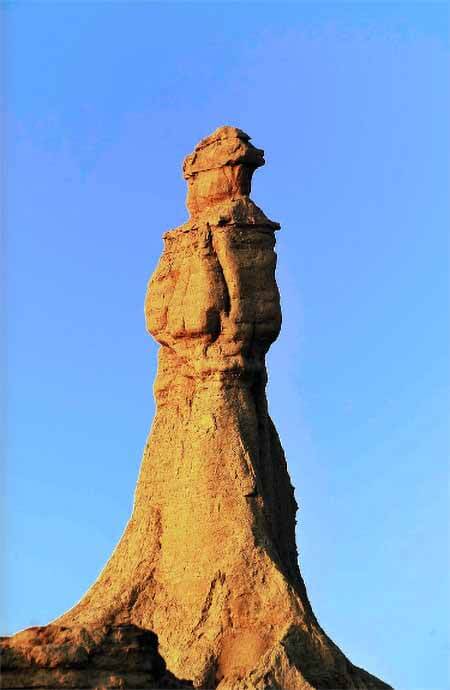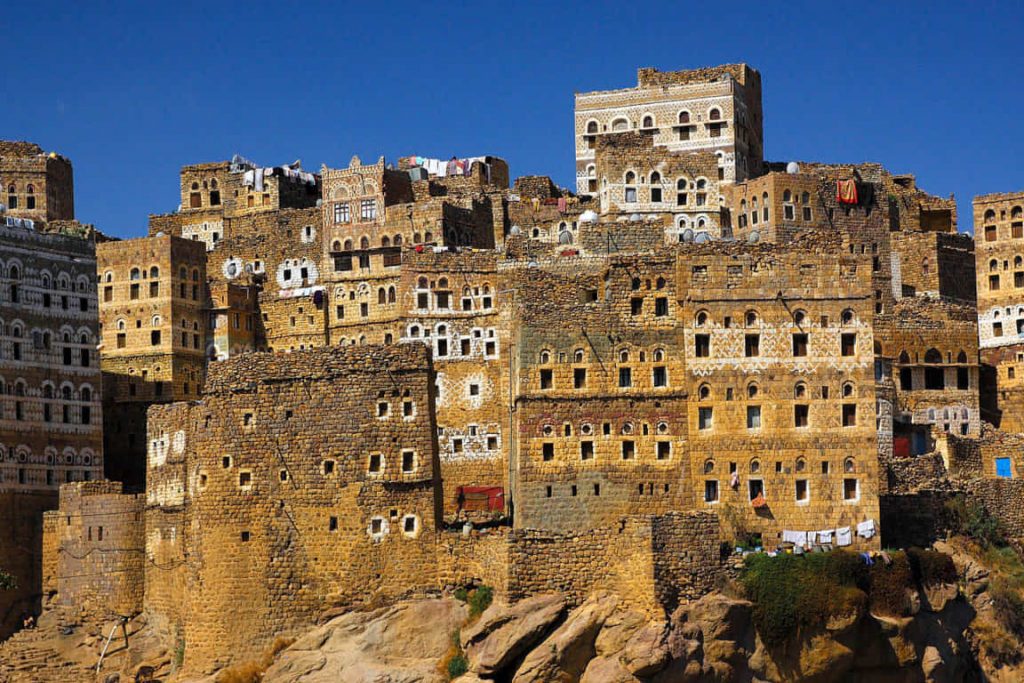Ma’rib, Yemen
Coordinates: 15.404403, 45.355651
Nearby Places
- Throne of Queen Sheba 1.34 Km W (263°)
- Bar’an Temple complex (معبد بران) 1.34 Km W (263°)
- Ruins of Old Ma’rib (Unesco, tentative) 1.49 Km NW (335°)
Awwam can refer to the region of Awwam, or to the famous temple of Awwam otherwise known as the Mahram Bilqis (“Sanctuary of the Queen of Sheba”). In the pre-Islamic times, numerous pilgrims gathered in Ma’rib city and headed to Almaqah temple of Harunum to perform their cultic rituals, and continued to the sanctuary of Awwam using the processional road.
Temple of Awwam
The Temple of Awwam or “Mahram Bilqis” is a Sabaean temple dedicated to the principal deity of Saba, Almaqah, near Ma’rib in what is now Yemen. The temple is situated 7 kilometres (4.3 mi) southeast of ancient Marib and was built in the city outskirt. Usually, Sabaean major sanctuaries are located outside urban centers, the reason behind it, is probably for religious privacy, and to facilitate the conduct of rituals by arriving pilgrims from remote areas of Sabaean territories. Such patterns are observed in several temples from Al-Jawf and the Hadramaut.
Pillars
The pillars, which were the most common architectural feature in southern Arab religious buildings before the Islamic period, stand out in this temple, as well. The largest section of the temple, which has eight pillars of 13 meters in height, creates a circular area. This structure, on which inscriptions in Old South Arabian language are written, connects to the inner section of the temple where the pillars are located via a large gate.
Tunnel linking two temples
It is believed the temple was once connected to Arash Bilqis (Throne of Bilqis) via a tunnel; however, over time, the tunnel fell into disrepair and was reclaimed by nature.
Pristine inscriptions
The inscriptions on the pillars can still be read clearly. While this increases the value of the temple, the detailed masonry in the inner hall indicates how advanced the Sheba people were as artisans.
Cemetery
There is a graveyard in the oval section of the temple. Though the graves are arranged in four-story rooms, the faces of the dead are depicted in relief on the exterior walls. The majority of the temple’s structure, which has been left unguarded and neglected because of the war, is under the sand. The historical ruins are protected with just a simple wire.







